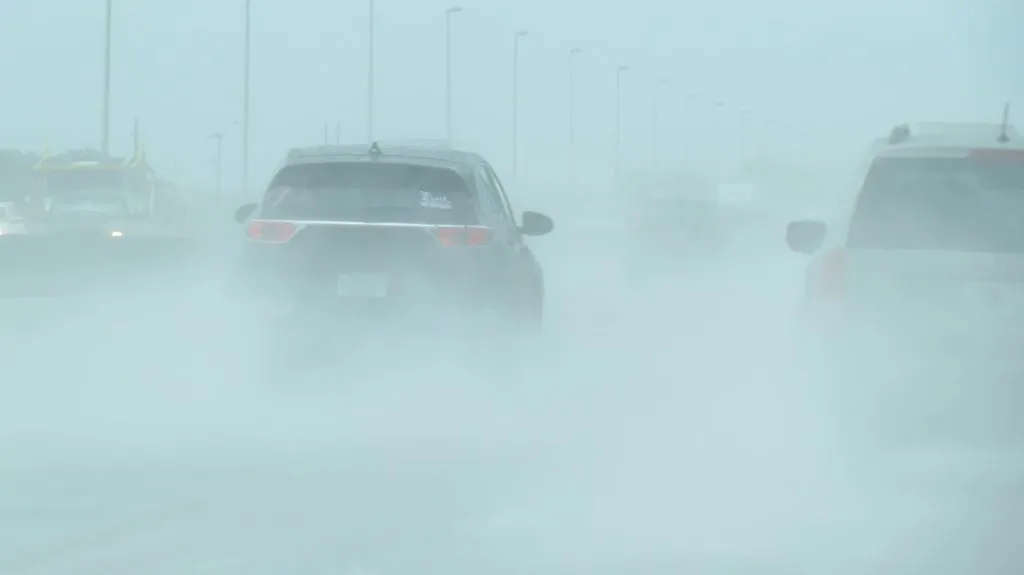Driving in Fog: Safety Rules and When to Stop
- Understanding the Hazards of Foggy Conditions
- Turn on Your Fog Lights — Not High Beams
- Adjust Your Speed According to Visibility
- Keep Hazard Lights Off While Driving
- Maintain a Safe Following Distance
- Avoid Frequent Lane Changes
- Use Your Heater to Prevent Windshield Condensation
- Stay Informed About Weather Conditions Before Driving
- Plan Your Route Ahead of Time
- Use GPS Navigation Systems for Better Awareness
- When You Should Stop Driving in Fog
Fog is one of the most challenging driving conditions, greatly increasing the likelihood of an accident. It is crucial to learn how to drive in fog. In this article, we are going to analyze the risks arising in foggy weather, discuss the safe driving practices, and the tips that will make you and your passengers safe on the road.

Understanding the Hazards of Foggy Conditions
Fog presents a unique risk for a variety of reasons:
- Decreased Visibility: Fog degrades visibility, typically making it below 100 meters, and prevents one from being able to see other vehicles, road signs, and traffic signals. This can lead to unexpected impacts with other drivers, thereby making accidents more probable.
- High Accident Likelihood: Road conditions like fog and the speed of vehicles enhance the possibility of accidents whenever vehicles cannot control their speed. The majority of data agree that fog is the major cause of most multi-vehicle road accidents.
- Impact on Judging Distance: The fog can hinder the perception so that objects appear closer or farther than they are. This will lead to lane-change and merge errors because drivers can’t accurately estimate the speed or distance of oncoming vehicles.

Turn on Your Fog Lights — Not High Beams
When driving in the fog, it is recommended to use fog lights rather than high beam lights. High beam headlights will impair vision, as fog reflects the light (it consists of tiny water droplets that reflect light like a mirror). This will cause a glare effect, which will distort the vision of the road ahead. Fog lights are specifically made to light up the road directly in front of your vehicle without casting any glare to other drivers, and if they malfunction, it may be worth scheduling a сar electrics diagnostic.
Key Points:
- Use front fog lights for improved road illumination, particularly in foggy conditions with reduced visibility.
- Avoid using high beam lights to prevent blinding yourself and the driver of the oncoming vehicle. Proper use of fog lights can enhance your perception of the road surface and ensure safe driving.

Adjust Your Speed According to Visibility
Slowing down according to visibility in fog is most critical. It is recommended to slow down at least by 50% where visibility is much lower.
Speed Adjustment Tips:
- Use road markers or lane lines as references in order to maintain your lane.
- In case of poor visibility that is less than 50 meters, it is advisable to stop until good weather. This is done for extra caution (to avoid accidents and ensure your safety).
Keep Hazard Lights Off While Driving
While it will be reasonable to utilize hazard lights (or even to pull over) in foggy conditions, it is best not to do so, as it will mislead other motor vehicle users. Hazard lights indicate that your car is stopped or affected, and this can create confusion on the road. Rather, keep your normal lights to signal your presence and intentions clearly. This allows other drivers to realize your actions and minimize the occurrence of accidents.

Maintain a Safe Following Distance
Double your gap in foggy conditions as compared to the normal gap. The more gap you have, the longer the time you have to react to sudden stops due to road debris or other obstructions. The suggested gap is at least a four-second safety distance between you and the vehicle in front. A larger gap gives you more reaction time, which is crucial in low visibility.
Avoid Frequent Lane Changes
Excessive lane shifting tends to heighten accident probability in a foggy environment. Minimize your movement to stay stable and remain on your course. It is also recommended to use cruise control to maintain a constant speed and make a change only when obligatory. Each lane change heightens the prospects for distance and visibility underestimation, raising the risk of collision.
Use Your Heater to Prevent Windshield Condensation
Fog on your windshield and side windows will block your vision. Avoid this by using your car’s air conditioner and heater properly:
- Turn the heater to high heat and have the airflow blow towards the windshield.
- Use the air conditioner to support evaporation of water vapor in the interior air in your car. This function can greatly enhance driving visibility and comfort when driving under fog.

Stay Informed About Weather Conditions Before Driving
Always check the weather forecast before you drive off. Knowing what you will probably face will allow you to prepare for foggy weather and plan your journey beforehand. You can take a look at weather websites or call phone apps to get reports on road conditions and visibility. Being informed will allow you to make a more informed and rational choice of whether to travel or reschedule your journey.
Plan Your Route Ahead of Time
Pre-plan your itinerary to save you from traffic jam areas or complex intersections that could be tougher to navigate under fog. Drive on routes with fewer turns and merges that are easier to navigate. Planning your route beforehand can save you from nervousness and ensure more safety on the roads.
Use GPS Navigation Systems for Better Awareness
GPS navigation systems can be a great help while driving in foggy conditions. They provide you with real-time updates on traffic, road obstructions, and weather patterns that assist you in driving efficiently and safely.
Benefits of GPS:
- GPS can inform you about traffic jams or accidents ahead so that you don’t encounter them.
- Voice guidance makes your hands stay on the steering wheel, thus driving in bad weather becomes safer.

When You Should Stop Driving in Fog
If fog gets too dense to drive safely, it is essential that you recognize when to pull over and wait until the weather improves.
- Find a Safe Spot: Travel to a designated rest area, parking lot, or safe spot off the flow of traffic. Avoid stopping on the shoulder of a busy highway if possible, as it is risky.
- Use Your Parking Lights: Turn on your parking lights to be visible to other drivers. Hazard lights should not be used except when there is a hazard.
- Stay Inside: Stay inside your car with your seatbelt buckled until the fog lifts. It is not safe to leave your car when it is foggy because of oncoming traffic.
Driving in foggy conditions requires heightened awareness and caution. By following these tips and understanding the hazards, you can navigate through fog safely and confidently. Always prioritize safety and be prepared to adjust your driving habits to the conditions.
For optimal visibility, contact Car Service to upgrade or replace your fog lights.




